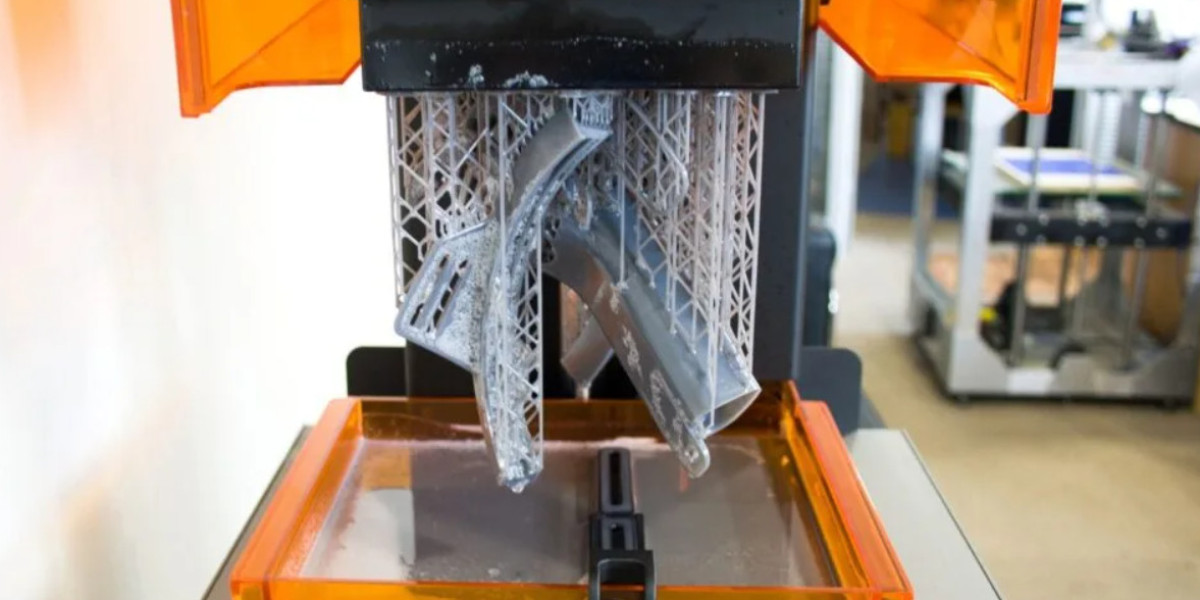Direct Metal Laser Sintering (DMLS) has quickly become a transformative technology in the world of manufacturing. By leveraging the power of lasers to fuse fine metal powders into solid structures, DMLS is reshaping industries such as aerospace, automotive, and medical device manufacturing. This article explores what DMLS is, its advantages, and how it’s paving the way for a new era in metal part production.
1. What is Direct Metal Laser Sintering (DMLS)?
Direct Metal Laser Sintering (DMLS) is a form of 3D printing, also known as additive manufacturing, that specifically uses metal powders to build parts layer by layer. A high-powered laser melts or sinters the metal powder, fusing it together to form the final product. DMLS is a highly precise and effective method for creating complex metal parts that traditional manufacturing processes, such as casting or machining, may struggle with.
DMLS allows manufacturers to produce highly detailed, durable parts with fewer restrictions, particularly when it comes to intricate geometries and custom designs.
2. Advantages of DMLS Over Traditional Methods
There are several key benefits to using DMLS over conventional manufacturing techniques:
Complex Geometries and Customization: One of the biggest advantages of DMLS is its ability to create complex and customized parts that would be difficult or impossible to produce using traditional methods. Whether it’s an intricate lattice structure for weight reduction in aerospace or custom implants for medical patients, DMLS offers unparalleled flexibility.
Material Efficiency: Unlike traditional methods that may result in excess material waste, DMLS only uses the exact amount of material needed for the part. The excess powder can often be reused in future builds, reducing waste and making DMLS an environmentally friendlier option.
Speed and Cost-Efficiency: While DMLS can be a bit more costly per part compared to traditional methods, its speed in prototyping and the ability to create functional, complex parts in a single build can significantly reduce costs in the long run, especially when working with low-volume production runs.
High Strength and Durability: The parts produced by DMLS are dense and strong, often exhibiting mechanical properties comparable to traditionally manufactured parts. DMLS is particularly useful for industries that require high-performance materials, such as aerospace and automotive, where strength and heat resistance are critical.
3. Applications of Direct Metal Laser Sintering
DMLS has found its place in several industries, each of which benefits from its precision and versatility:
Aerospace: The aerospace industry has been one of the biggest adopters of DMLS due to the need for lightweight yet strong parts. Components such as turbine blades, structural brackets, and fuel nozzles can be created with intricate geometries that reduce weight while maintaining strength and durability.
Automotive: In automotive manufacturing, DMLS is used for producing high-performance parts like engine components, brackets, and exhaust systems. The ability to create custom or optimized parts in small batches is a huge advantage for manufacturers seeking to stay competitive.
Healthcare: The medical field also greatly benefits from DMLS technology. Custom implants, prosthetics, and surgical tools can be created with highly personalized specifications to improve patient outcomes. Additionally, DMLS allows for the creation of intricate bone structures and tissue scaffolds for research and regenerative medicine.
Tooling and Production: DMLS is also widely used for producing tooling and production aids. For example, metal molds and jigs used in manufacturing can be 3D printed using DMLS, allowing for faster turnarounds and reduced lead times.
4. The Future of DMLS
As the technology continues to evolve, the capabilities of DMLS are expected to expand. The advent of new materials and further advancements in laser precision will continue to enhance the strength, speed, and quality of printed metal parts. We may soon see even more industries adopting this technology to improve production methods and push the boundaries of design innovation.
Moreover, DMLS is contributing to the development of parts that can’t be created with traditional manufacturing, such as parts with internal cooling channels for engines or other complex designs that optimize performance. As industries demand greater efficiency and customization, DMLS will play an increasingly pivotal role in shaping the future of manufacturing.
Conclusion
Direct Metal Laser Sintering is transforming the manufacturing landscape by enabling the production of intricate, high-performance metal parts that would be challenging to produce using conventional methods. With its ability to create complex designs, reduce material waste, and increase speed and efficiency, DMLS is the future of metal part manufacturing. As this technology continues to evolve, it will only become more integrated into industries that rely on precision and innovation, from aerospace to healthcare and beyond.




![Melchie Dumornay - Football Star [Player Card Info]](https://camlive.ovh/upload/photos/2025/04/5KPCwwg9e4pnjrim57Kq_27_d3110aa8cded43b570b2f2a082b607bc_image.png)
